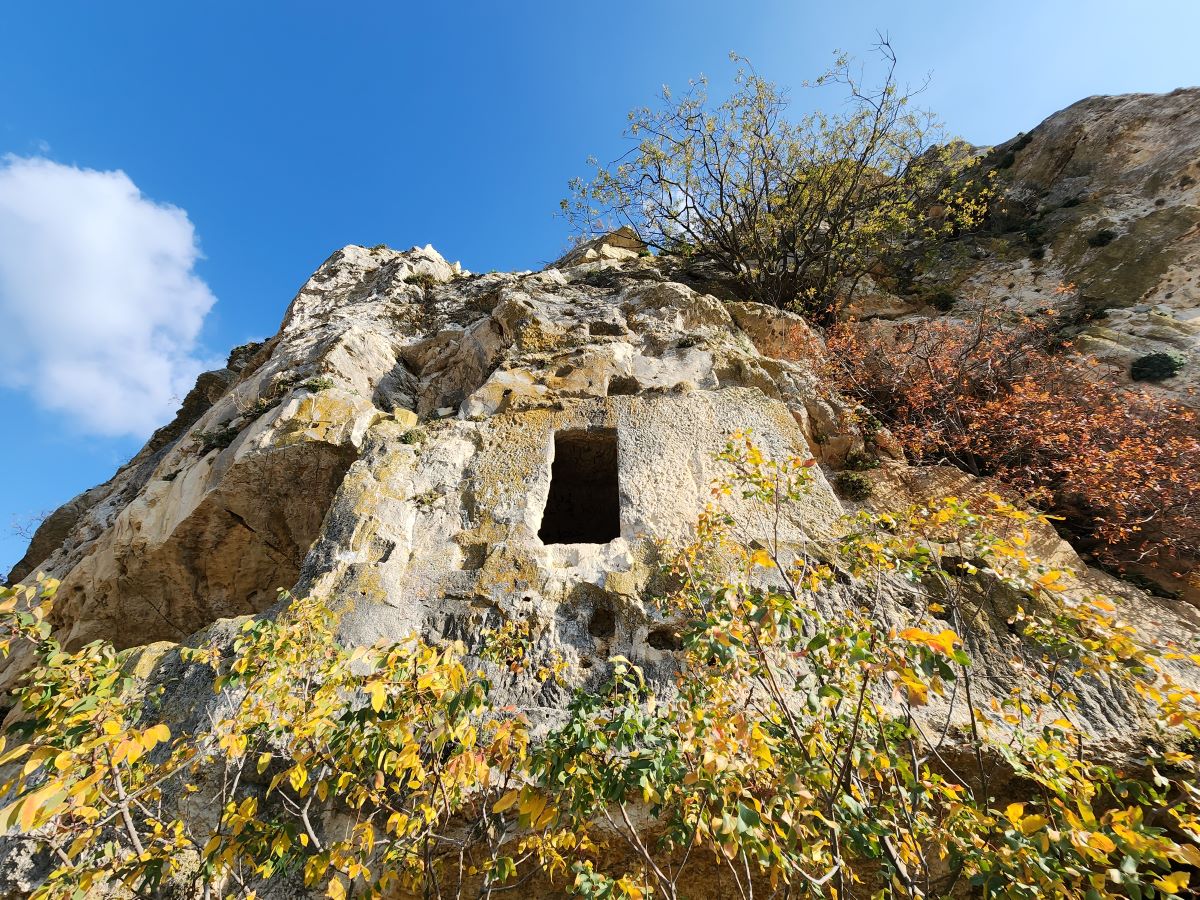Niha houses a Medieval era fortress built on a high cliff that overlooks the casa of Jezzine and the Chouf.
The site is part of the Chouf Biosphere reserve, whose team have done an amazing job in preserving and promoting it.
Toponym
The fortress of Niha bears several designations:
“Cavea de Tyrum”, a 12th century designation given by the Crusaders.
“Chqif Tayroun”, a designation used by the Arabs.
In French historical and archaeological works, the fortress is called “La Cave de Tyron”.
Modern day designations mention the fortress as Qal’et Niha (fortress of Niha) or “Chqif Niha”, “Qal’at Fakhreddine” (fortress of Fakhreddine) and “Chqif Tayroun”.
“Chqif” is an aramaic word which means “the big rock” or the “cliff”. There is therefore an equivalence between the location of the site and the toponymic formation. As for the word Tayroun, its explanation remains problematic. Issa al Maalouf explains that Tayroun originates from the Latin TIRO, meaning the “new soldier”, or from the Greek TUPI meaning “Cheese”. He justifies this last explanation by the fact that the place was used, among other things, to lock up the goats and to extract the cheese from their milk. He completes his explanation with another toponymic track: the site would have been associated with the city of Tyr, hence the name Tyron.
Timeline
975 – first mention of the fortress under “Chqif Tayroun” during the Fatimide period.
November 1133 – The fortress which was then under the control of a Druze Cheikh – Dahhak Bin Jandal-Al Taymi, was taken by the Prince of Damas – Chams al-Moulouk Bouri. As a result, the Crusaders invaded the Houran region in Syria, who were on good terms with Dahhak who did not allow violence against Christian lands near his domains.
1143 – The fortress is taken by the Crusaders.
1665-1666 – The fortress is taken by the Arab armies.
1182 – Chqif Tayroun is given to the Crusader following a peace act by the Arab armies, only to be taken again by the Mamluk Sultan Al Malek Saleh Ismail in 1238, who, in 1241, gave it back to the Crusaders following a peace act.
1251 – The fortress is taken by the governor of Saida, Sa’edel-Din bin Nizar.
1257 – The fortress is given to the Teutonic Order, and was taken by the Tatars in 1260.
1264 – Chqif Tayroun is taken by the Mamluk Sultan Baybars after a 10 days seige.
1590 – Chqif Tayroun is under the control of Fakhreddine.
1633 – Fakhreddine took refuge in the fortress besieged by the Ottomans. He would be later on captured in a nearby grotto outside the fortress, taken to Constantinople where he was imprisoned in Yedikule and executed in April 1635.
Structure
Chqif Tayroun is incorporated into the cliff, featuring chambers, cisterns and other elements carved into the rock. Successively destroyed and rebuilt by conquerors, the fortress’s structural remains are minimal.
It is accessible through a narrow path that runs along the cliff from north to south. The start of the path has paved staircases, with a section that used to house the horses; One can clearly see on the rock wall 5 rings or holes cut in the limestone, serving as hooks, to pass the reins of the horses.
As the path continues, one can see a couple of wall courses, probably a work of Fakhreddine, whose function was to create and strengthen the fortress’ defensive systems. Additionaly, rock-carved channels and others built by bricks can be seen, which had the function of conveying water from the source of Halqoum to the fortress and preserving it in rock-carved basins. As the path near its end, one can count at the upper sections of the cliff 7 chambers that were used as shelters, and 5 silos to store grains and provisions.
At the top of the cliff, a niche cut in a slight hollow in the rock can be notcied. Its upper part takes the form of a broken arch. It probably dates from medieval times and was used to display a sign or emblem.
Karim Sokhn
Tour Operator & Tour Guide
References:
La Grotte Forteresse De Chqif Tayroun A Niha, Histoire et Archeologie, 2015, Wissam Khalil.






